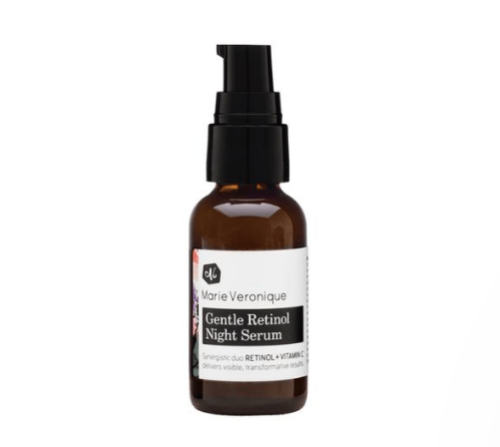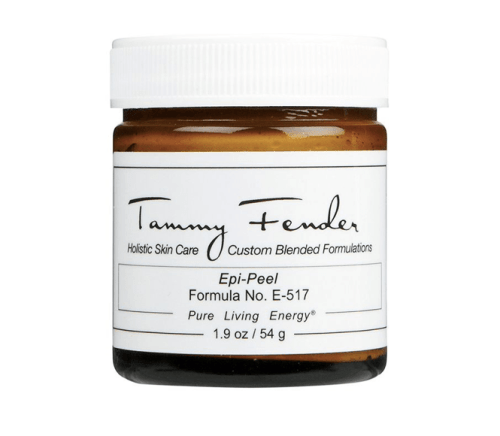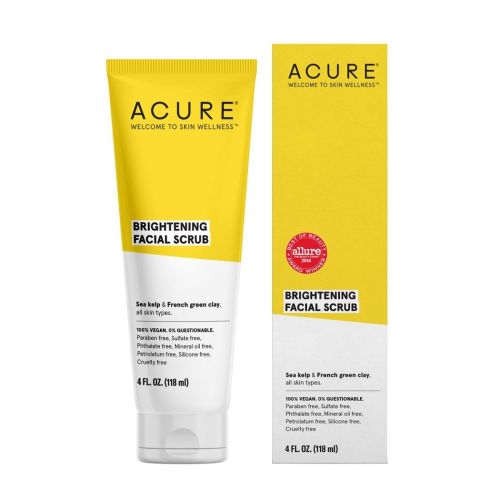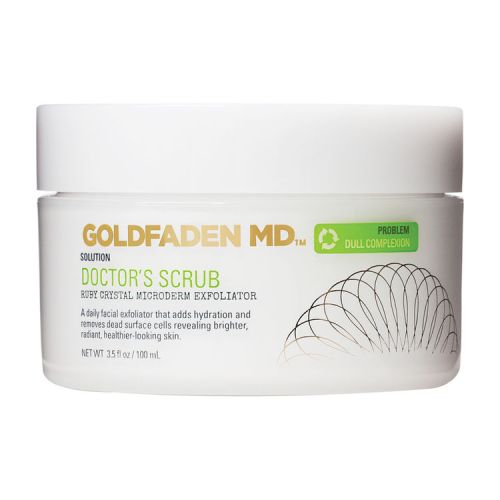It can be frustrating when you have sensitive skin. Just like being a sensitive person, the smallest thing can set you (or your skin) off. Before trying a face mask, chances are you inspect ingredient lists for anything that could be irritating; you may or may not slather on beauty products that are meant for kids (or even babies); and the rest of the time you’re just living on a prayer that nothing causes a fiery reaction on your complexion.
Exfoliation gets trickier, though. The practice of sloughing off dead skin cells is something you should do at least weekly—but there are so many different methods to go about it, with options ranging from a chemical peel to a facial scrub. The thing is, they’re not as typically marked as sensitive skin friendly—and that’s because exfoliating is a more intense treatment and is more likely to cause irritation than other parts of your beauty regimen.
“Exfoliating can help remove dead cells from the surface of the skin, but you have to be careful not to cause irritation if you have sensitive skin,” says Joshua Zeichner, MD, a New York-based dermatologist. He notes that you can go down two basic roads: chemical or manual exfoliating. There are perks to both, you just have to know what to look for.

Chemical exfoliating
When using a physical exfoliant, you are the exfoliant, manually working in the scrub to lift away skin cells. With a chemical option, however, you just slather on an assortment on acids and let them get to work. But…some can be a bit much if your skin’s really irritable. “Chemical exfoliators like hydroxy acids help dissolve connections between skin cells so they can be more easily shed,” explains Dr. Zeichner. “The most commonly used are alpha hydroxy acids (AHAs) like glycolic acid. While effective, they’re strong and cause irritation, making them a challenge for people with dry or sensitive skin.”
Instead, he recommends turning to a more gentle form of acid. “Stick to one of the newer generation hydroxy acids known as poly hydroxy acids (PHAs),” says Dr. Zeichner. “Ingredients like gluconolactone offer similar exfoliating benefits, but work more slowly and are more tolerable to sensitive skin types.” Another perk is that they’re a humectant that pulls water into the skin, he adds.
Want a different option? Invest in a trusty retinol serum. While it’s not technically an exfoliant, it works in a similar way. “A great way to exfoliate sensitive skin is to use a retinoid, which normalizes skin cell turnover, helps to de-clog pores, and treats and prevents acne,” says Melissa Kanchanapoomi Levin, a board-certified dermatologist and founder of Entière Dermatology. However, take note: Retinol can cause irritation, and you kind of have to train your skin to use it. Start off by trying it a few times a week, and when your skin can tolerate it, work up from there.
Chemical exfoliants

Glow Recipe Avocado Melt Sleeping Mask $45

Marie Veronique Gentle Retinol Night Serum $110

Tammy Fender Epi-Peel $80
Physical exfoliating
So, yeah, like I was saying, physical exfoliants are totally dependent on you. A lot of times, they can be abrasive if you’re really going to town on your face, but the thing about physical exfoliants is that you have full control over them, so you can also lighten up your touch. “I recommend using a physical exfoliant for sensitive skin because you can control the intensity yourself,” says Robert Anolik, MD, a New York-based dermatologist. “If you’re getting irritated, you can just stop.” Dr. Zeichner agrees, whereas sometimes it take more time to neutralize an acid on skin.
If you’re going with this route, Dr. Anolik recommends exfoliating this way one to two times a week. And remember: Be gentle!
Physical exfoliants

Acure Brightening Facial Scrub $10

Goldfaden M.D. Doctor's Scrub Exfoliator $75

Tatcha The Rice Polish Foaming Enzyme Cleanser $65
Oh, and this is how hard you should scrub your face when exfoliating. Also: Don’t forget to exfoliate your feet (yes, really).
Sign Up for Our Daily Newsletter
Get all the latest in wellness, trends, food, fitness, beauty, and more delivered right to your inbox.
Got it, you've been added to our email list.











